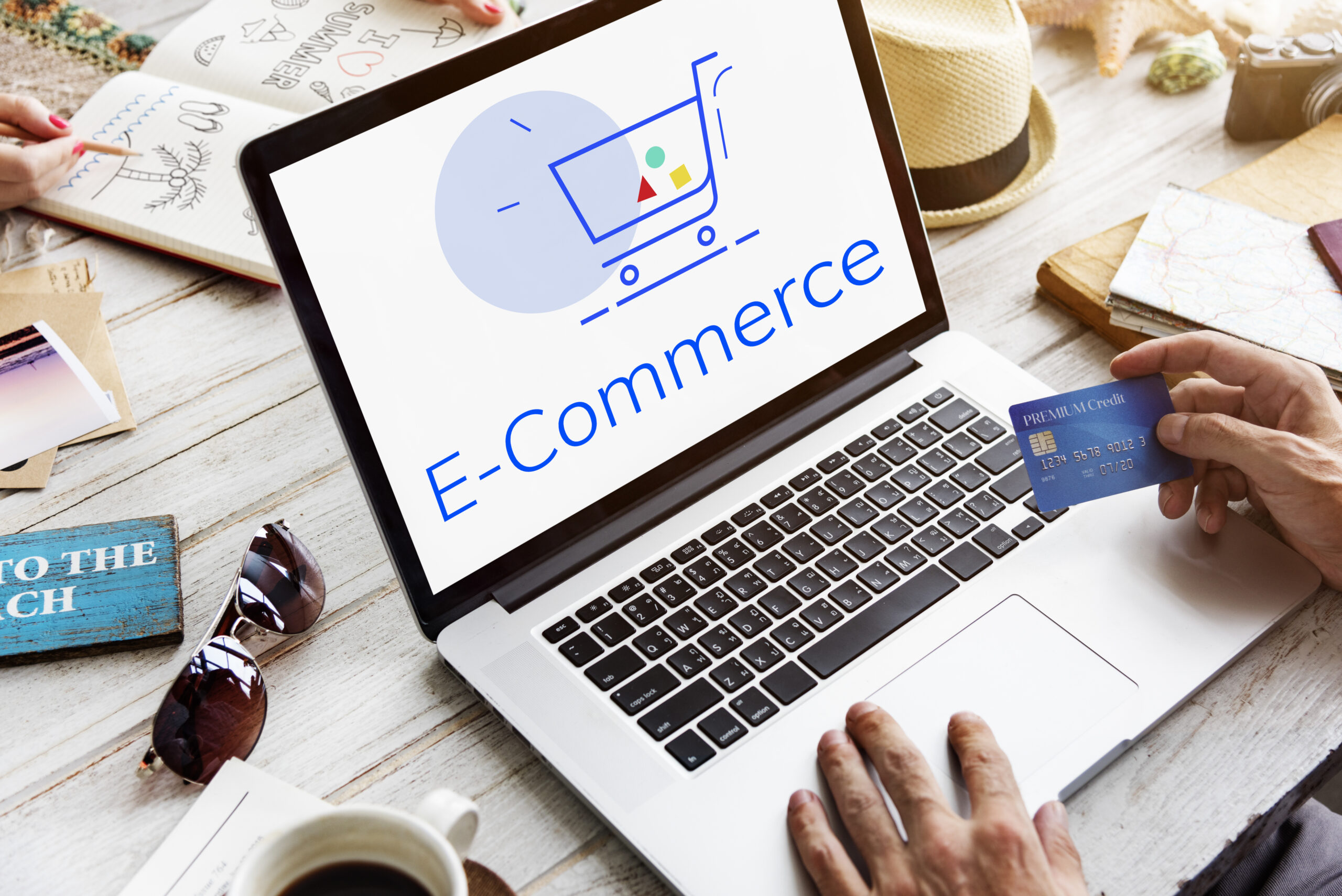Introduction
E-commerce, or electronic commerce, refers to the buying and selling of goods and services over the internet. With the rapid advancement of digital technology, e-commerce has become an essential part of the global economy. Whether you are an entrepreneur looking to start an online business or a consumer shopping online, understanding e-commerce is crucial.
What is E-commerce?
E-commerce is a business model that allows individuals and companies to conduct commercial transactions online. This includes online shopping, digital product sales, subscription-based services, and business-to-business (B2B) transactions. What is e-commerce? It is simply the digital transformation of traditional commerce into an online platform that enables easy access to products and services globally.
Types of E-commerce
E-commerce is categorized into several types, including:
- Business-to-Consumer (B2C): This is the most common type, where businesses sell products directly to consumers. Examples include Amazon, Flipkart, and Myntra.
- Business-to-Business (B2B): In this model, companies sell products or services to other businesses. Alibaba and IndiaMART are prime examples.
- Consumer-to-Consumer (C2C): Platforms like eBay and OLX allow individuals to buy and sell items from each other.
- Consumer-to-Business (C2B): In this model, individuals sell products or services to businesses, such as freelancers on Fiverr or Upwork.
- Direct-to-Consumer (D2C): Brands sell directly to consumers without any intermediaries, commonly seen in niche brands.
- Mobile Commerce (M-commerce): Buying and selling through mobile applications and social media platforms.
- Dropshipping: A business model where the retailer doesn’t keep inventory but transfers customer orders to third-party suppliers.
How Does E-commerce Work?
The working of e-commerce involves several key components:
- Website or Online Store: Businesses set up an online platform where consumers can browse and purchase products. You can check an example on ITG Official.
- Payment Gateway: Secure payment gateways like PayPal, Razorpay, and Stripe facilitate online transactions.
- Order Processing and Fulfillment: Once a customer places an order, it is processed, packed, and shipped to the customer.
- Customer Service & Support: Ensuring customer satisfaction through after-sales support and returns management.
- Marketing Strategies: Using SEO, PPC, social media, and email marketing to drive traffic and increase sales.
Advantages of E-commerce
E-commerce offers multiple benefits for both businesses and customers:
- Global Reach: Businesses can reach customers worldwide, eliminating geographical barriers.
- Lower Costs: No need for a physical store, reducing overhead expenses.
- Convenience: Customers can shop anytime, anywhere, making the process more efficient.
- Data Insights: Businesses can track customer behavior and preferences to improve marketing strategies.
- Personalized Shopping Experience: AI-driven recommendations enhance user experience.
- Scalability: Businesses can easily scale operations without huge investments.
Challenges of E-commerce
Despite its advantages, e-commerce also has challenges:
- Cybersecurity Risks: Online transactions can be vulnerable to hacking and fraud.
- Competition: High competition makes it difficult for new businesses to gain visibility.
- Logistics and Delivery: Managing supply chains and timely delivery can be complex.
- Customer Trust: Building credibility and trust in online transactions takes time.
- Return & Refund Issues: Handling returns and refunds efficiently can be challenging.
Future of E-commerce
E-commerce is evolving rapidly with advancements in technology. Key trends include:
- Mobile Commerce (M-commerce): More people are shopping via mobile devices.
- Artificial Intelligence (AI) and Chatbots: Personalized recommendations and customer support automation.
- Voice Commerce: Shopping through voice assistants like Alexa and Google Assistant.
- Social Commerce: Selling products directly through social media platforms like Instagram and Facebook.
- Augmented Reality (AR) Shopping: Virtual try-on features enhance customer experience.
- Blockchain in E-commerce: Improving transaction security and transparency.
How to Start an E-commerce Business
If you are planning to start an e-commerce business, follow these steps:
- Choose a Niche: Identify a profitable niche based on market demand.
- Create a Business Plan: Define your business goals, target audience, and revenue model.
- Register Your Business: Get the necessary licenses and permits for legal operations.
- Build an E-commerce Website: Use platforms like Shopify, WooCommerce, or Magento.
- Select Payment Gateways: Integrate secure payment solutions for seamless transactions.
- Develop a Marketing Strategy: Use SEO, PPC, social media, and email marketing to attract customers.
- Ensure Quality Customer Service: Provide prompt support and hassle-free returns.
- Optimize for Mobile: Ensure your website is mobile-friendly for better user experience.
- Monitor and Improve: Use analytics to track performance and optimize accordingly.
For more insights on digital marketing, check out ITG Official.
Conclusion
E-commerce is transforming the way we buy and sell products. With its convenience, cost-effectiveness, and global reach, it continues to grow and evolve. Whether you are a business owner or a consumer, understanding what is e-commerce is essential in today’s digital world. If you are planning to start your own online business, now is the perfect time to take advantage of this booming industry.



